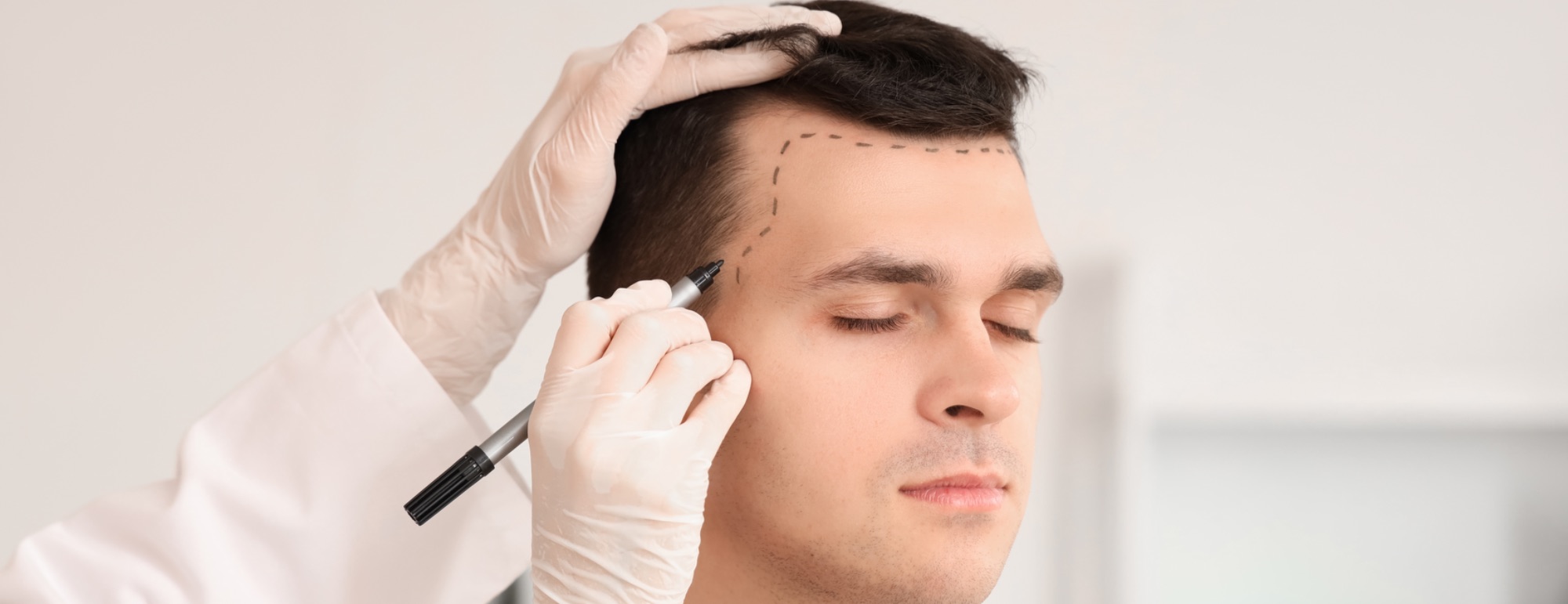Hair Transplant in Portugal
Hair transplantation in Portugal is a minimally invasive surgical procedure that helps restore hair growth, making it stronger and healthier.
ler mais
Discover everything you need about hair transplants and learn to distinguish myths from facts on this topic.
Hair loss is also an issue that affects people emotionally. Hair loss can damage self-esteem, impacting several aspects of daily life, from social situations to professional settings.
If you are thinking about having a hair transplant but are afraid of what might happen, you may be a victim of misinformation.
Although hair transplants are among the most common cosmetic surgeries today, they are often shrouded in doubts and contradictory information.
Advances in medical techniques have led to significant improvements in hair transplants. However, they still suffer from the stigma of past decades when the procedure left artificial-looking results and large scars.
Nowadays, things are very different. It’s essential, therefore, to separate truth from myth when it comes to hair transplants.
A hair transplant is a minimally invasive surgery. This procedure involves implanting hair follicles (small structures in the skin from which hair grows) into areas where hair is sparse or absent (usually the top of the head).
In hair transplantation, follicles are removed from areas where hair is plentiful (often from the nape and sides of the scalp). This procedure allows for the transplantation of hair from regions that aren’t predisposed to balding or hair loss to those with insufficient hair.
There are many myths surrounding hair transplants that lead many people to postpone an intervention that can do wonders for their appearance, but also for their self-esteem.
One of the most common myths is that hair transplants use someone else's hair. This is false. The procedure is carried out exclusively with the patient's hair to avoid the risk of rejection.
Although using someone else's hair could theoretically be an option, the side effects that anti-rejection medications generate would not justify this option, because hair transplantation is an aesthetic procedure.
Another common misconception is that the results are only temporary. Transplanted hair does not fall out throughout a person’s life.
It’s also a myth that hair transplants are only for young people. You are never too old to have a hair transplant. Advanced age is not a barrier if the donor areas on the back and sides of the head are suitable for hair transplant.
Another myth is that hair transplants are extremely painful. Modern techniques are revolutionizing this procedure, utilizing advanced technology to ensure comfort during the transplant.
Nowadays, discomfort is minimal, providing a much smoother experience. Hair transplants involve no stitches. Local anesthesia is used, with light sedation to make the patient comfortable, as it is a lengthy procedure.
Most patients who undergo this procedure can resume their daily activities within 24 hours of completing their hair transplant.
Those considering a hair transplant should avoid getting swayed by myths and instead focus on the facts. However, there are some essential insights to bear in mind before opting for surgery.
The patient’s chronological age does not affect the quality of the donor area, but biological age can. It can influence the quality of the donor area.
When there is premature aging of the hair, it affects the quality of the hair, causing thinning of the hair strands and reducing hair density.
In addition to minimizing pain, the healing process in the donor area is swift. The skin begins healing from the tiny follicular extraction points on the first day after the transplant.
Hair growth typically begins to cover small marks about 7 days post-transplant. Scabs fall off, and marks become barely noticeable after 10 days.
Although hair loss is a more common problem in men, it is not exclusive to men. Baldness or androgenetic alopecia can also affect women.
Therefore, hair transplantation can also be an option for women, as it is not necessary to shave all of the hair for this procedure.
Once the hair transplant is completed, the natural hair growth process resumes, with growth beginning 3 to 4 months post-surgery and typically increasing at about 1 cm per month.
Hair transplants aren’t suitable for everyone. Before undergoing a transplant, a specialist doctor must assess to rule out conditions that contraindicate hair transplants.
Certain conditions compromise the expected results, so hair transplants are only recommended for individuals with conditions that allow for long-lasting outcomes. Typically, hair transplants are recommended for those with:
It’s essential to consult an experienced and specialized hair medicine practitioner to ensure a successful transplant. An expert will provide a thorough and realistic assessment of your case. If you’re planning to go ahead with a transplant, be diligent in choosing a reputable clinic.
Experience in performing aesthetic surgeries is crucial to achieving perfect hair transplant results. At Master Group, you’ll find a team of professionals committed to delivering the best outcomes. Our specialists guarantee the most natural results, along with serious, attentive follow-up care for each patient.